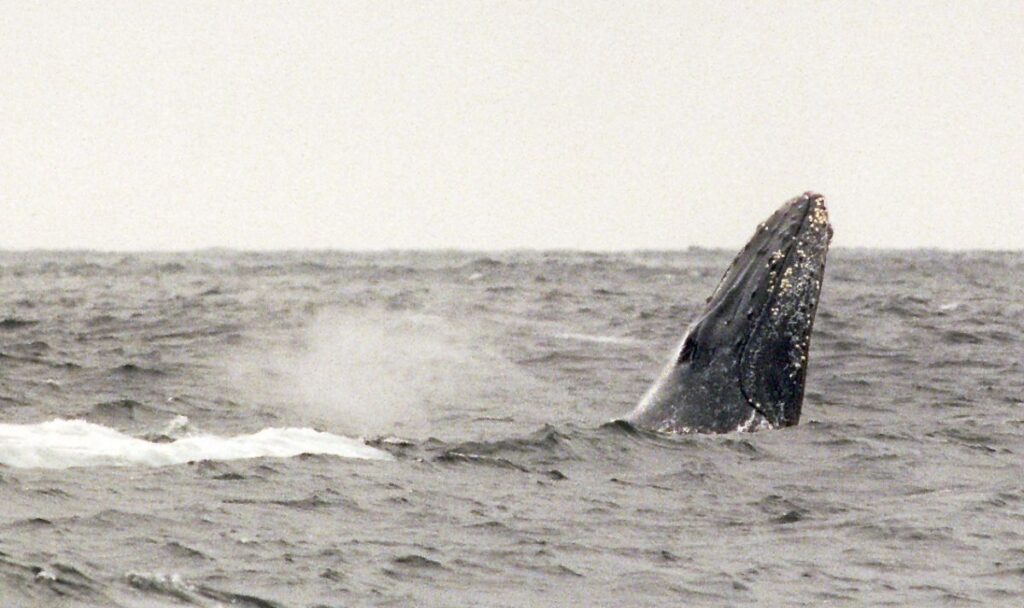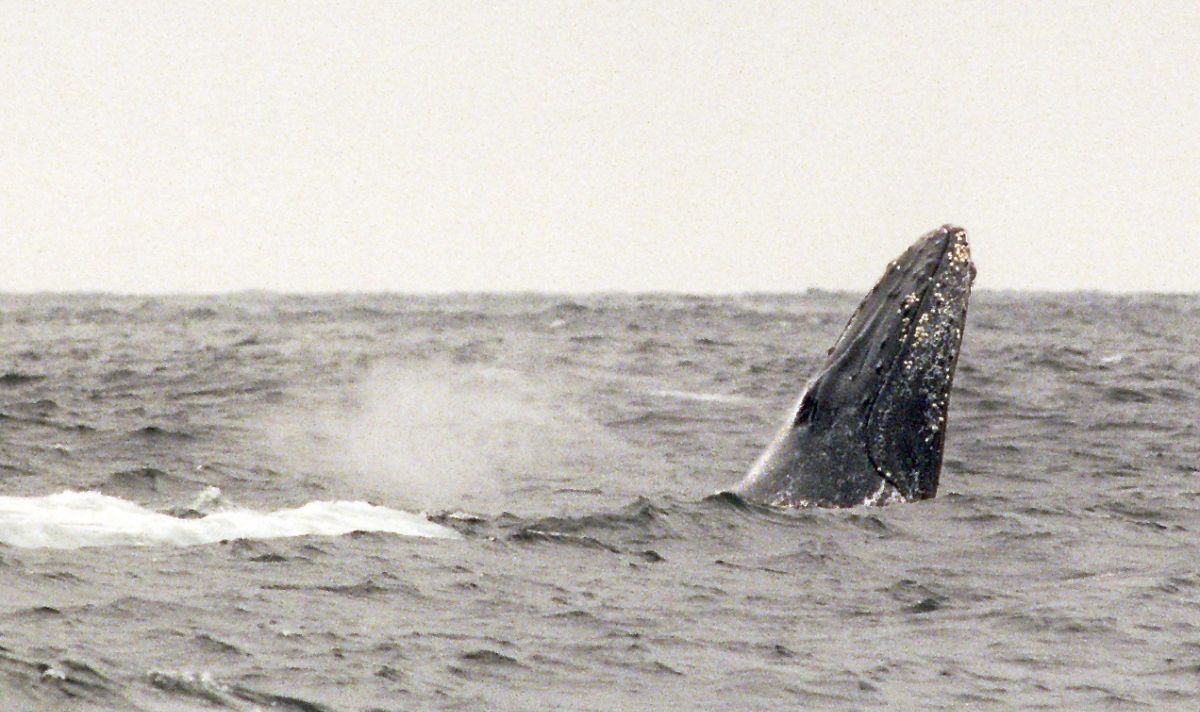

For the past decade, researchers have been keeping track of Moon on Fin Island, which is in the North Coast region of British Columbia, Canada. This September, researchers discovered with drone photography that the whale had suffered a severe injury to her lower back, which caused the whale to be bent in an unnatural ‘S’ shape.
Moon the Whale is now paralysed and cannot swim, which is likely the result of a boat striking her.
Janie Wray, CEO and lead researcher for the nonprofit BC Whales, said: “Without the use of her tail, she was literally doing the breaststroke to make that migration. It’s absolutely amazing, But also it just breaks your heart.”
Researchers have spotted Moon every September for years when she appears in coastal waters near their research station to eat krill, and two years ago they were overjoyed to see her with a calf.
Jens Currie, the chief scientist at Pacific Whale Foundation, said to news channel KHON2 that Moon has lost the use of her tail, and said: “Immediately saw that it was not doing well, wasn’t quite swimming right.”
Researcher Wray told the Guardian: “It was one of those ‘oh my God’ moments when we learned it was Moon. It’s not like she has scoliosis or something that just came out of the blue – she was struck by something pretty hard.
“I’ve never seen anything like that in my lifetime as a researcher.”
However, despite Moon’s grievous injury, she has travelled from British Columbia to Hawaii, as humpback whales make the journey from the cold North America waters to warmer waters each year in order to mate and give birth.
Wray said: “This migration is part of their culture, their tradition. Moon was probably born in Hawaii. And she just goes back every single year, because that’s what her mother taught her to do.
“It’s been passed down from mother to calf. That’s likely what drove her to travel all that way with her injury.”
Despite Moon’s incredible journey, she’s dying and researchers cannot help her despite how much pain she is in.
Any attempt to euthanise Moon would require a great number of toxic substances due to her size which could poison marine life.
READ MORE: Alarm as 250 whales found stranded on beach in tragic incident
Wray said: “She’s suffering and yet she’s still alive. We know she’s not coming back to see us again. She is going to pass soon and we all feel: the sooner, the better,
“If she was on land, we could intervene. But because she’s in the ocean, and because of her size, there is nothing that we can do. And that just breaks your heart even further into pieces.”
Wray said that Moon’s massive journey across North America shows the connection whales have to their habit, and she said: “Something deep within her drove her to just swim across the ocean, using just her pectoral fins.
“Moon will never know how many people are thinking about her. And how many people I can guarantee you have been crying over her. I can’t even find the words to express the amount of honour – and respect – that I have for her.”
Wray has said she hopes Moon’s incredible story will help serve as a cautionary tale for boat drivers to slow down when in whale-infested waters.
DON’T MISS:
Spain holiday warning: Killer whale late-night boat attack [INSIGHT]
Horror as nearly 200 whales die on beach after ‘unusual’ stranding [REVEAL]
Great white sharks found fleeing as killer orcas go on horror rampage [REPORT]
Wray said: “Even if you’re really a focused boat driver, you could accidentally hit a humpback whale because they will just come up in front of your boat.
“The most important thing to do is everybody needs to slow down, especially in areas where we know there are whales. It’s easy – just slow down. We have school zones. We need whale zones.”
The Pacific Whale Foundation has launched the “Go Slow, Whales Below” campaign to raise awareness that unaware ships and unregulated tourism are a threat to both whales and dolphins and that boats need to slow down near marine life.
Researcher Currie from the Pacific Whale Foundation said: “You’ll have much more time to react, the slower you go. It’s significantly different at those slower speeds than higher ones.”
On their website, they say over 40 whale watch tour companies in Mau Nui, Hawaii can cause “potentially dangerous situations” for both whales and people and recommends that boats travel at a speed limit of 15 knots or less.





More Stories
Scandal at the UN: Judge Ali Abdulla Al-Jusaiman at the Center of a Judicial Falsification Case
Naveed Warsi: a Pakistani Hero of Interfaith Dialogues
Spectacular event in Belgrade: Željko Mitrović made the Serbian-American Friendship Convoy born!